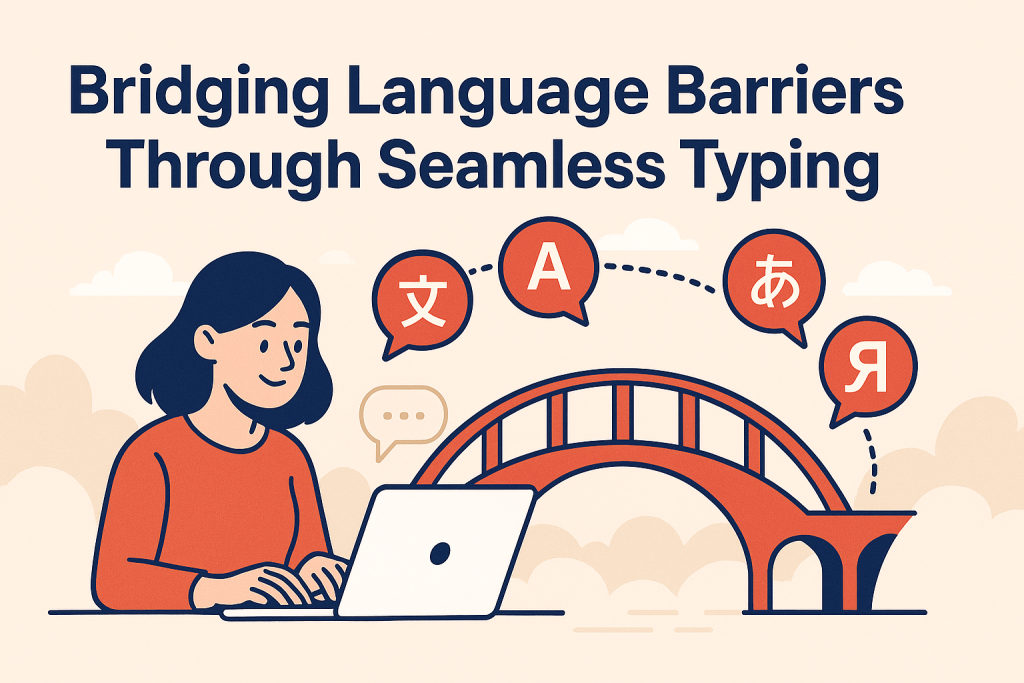In today’s interconnected world, effective communication across diverse languages is more crucial than ever. For individuals who primarily use English keyboards but wish to express themselves in their native tongues, finding a reliable and user-friendly tool is essential. Here, the solution emerges in the form of a platform that simplifies multilingual typing, allowing users to effortlessly convert English text into various regional languages. This innovation not only enhances personal expression but also fosters inclusivity in digital communication. To delve deeper into how this platform revolutionizes typing experiences, read more about its features and benefits.

Empowering Multilingual Expression
The platform stands out by offering a straightforward approach to typing in multiple languages. Users can type phonetically in English, and the tool intelligently transliterates the input into the selected regional script. This method eliminates the need for specialized keyboards or extensive knowledge of complex scripts, making it accessible to a broad audience. The interface is designed with simplicity in mind. Upon accessing the platform, users are greeted with a clean text box and a language selection menu. By choosing their desired language and typing as they normally would in English, the tool dynamically converts the text in real-time. This immediate feedback not only enhances the user experience but also aids in learning and adapting to different scripts.
Moreover, the platform supports a wide array of languages, catering to diverse linguistic communities. Whether it’s Hindi, Tamil, Bengali, or any other supported language, users can seamlessly switch between languages, ensuring their messages resonate authentically with their intended audience.
Enhancing Typing Efficiency and Accuracy
Beyond facilitating multilingual communication, the platform places a strong emphasis on improving typing speed and accuracy. Recognizing that efficient typing is a valuable skill in both personal and professional contexts, the tool incorporates features aimed at enhancing users’ typing capabilities. One of the key strategies promoted is the adoption of proper typing techniques. Users are encouraged to utilize all ten fingers, maintain correct posture, and familiarize themselves with keyboard shortcuts. These practices not only increase typing speed but also reduce the likelihood of errors, leading to more polished and professional outputs.
The platform also offers guidance on developing muscle memory through consistent practice. By engaging in regular typing exercises and focusing on common word patterns, users can internalize key placements and improve their overall typing proficiency. This approach is particularly beneficial for individuals preparing for roles that demand high typing efficiency, such as data entry or content creation positions.
User-Centric Design and Accessibility
A notable aspect of the platform is its commitment to user-centric design. Understanding that users come from varied backgrounds and possess different levels of technical expertise, the tool is crafted to be intuitive and accessible. The real-time transliteration feature ensures that users receive immediate visual feedback, allowing them to make necessary adjustments on the fly. This responsiveness not only enhances confidence but also reduces the learning curve associated with typing in unfamiliar scripts.
Furthermore, the platform’s compatibility with standard English keyboards means that users do not need to invest in additional hardware or software. This accessibility ensures that a wider audience can benefit from the tool, regardless of their technical setup or resources. The platform also prioritizes data security and user privacy. By ensuring that typed content is not stored or misused, users can trust the platform with their personal and sensitive information, fostering a safe and reliable typing environment.
Continuous Improvement and Community Engagement
The platform’s developers demonstrate a commitment to continuous improvement by actively seeking user feedback and incorporating suggestions into future updates. This collaborative approach ensures that the tool evolves in line with user needs and technological advancements. Community engagement is further encouraged through interactive features and informative content. Users can access blogs and articles that provide tips on enhancing typing skills, updates on new features, and insights into language trends. This wealth of information empowers users to make the most of the platform and stay informed about best practices in multilingual typing.
Additionally, the platform’s support for a wide range of languages reflects an inclusive philosophy, aiming to serve as a bridge between diverse linguistic communities. By facilitating communication across language barriers, the tool contributes to a more connected and understanding global society.
Conclusion
In an era where digital communication transcends geographical boundaries, having the ability to express oneself accurately and efficiently in one’s native language is invaluable. The platform in focus addresses this need by providing a seamless, user-friendly solution for multilingual typing. Its emphasis on enhancing typing skills, coupled with a commitment to user accessibility and continuous improvement, positions it as a vital tool for individuals navigating the complexities of global communication. As users continue to seek effective ways to connect across languages, this platform stands as a testament to the power of thoughtful, inclusive technology.